![Guaranteed Rugged Mike and Jack sitting by the Lillooet town sign with the motto]()
“Guaranteed Rugged” is the name of the longest bolted rock climb in North America. It’s in British Columbia in the mountains northeast of Whistler. It was established a little more than a year ago, in the spring of 2022 by some folks who were almost certainly trying to make the longest bolted climb in North America. I’m sure there was something alluring about that superlative title for them. Because there certainly was for me and my friend, Jack. As soon as Jack heard about it last year, he wanted to climb it. Last week, I met him in Canada to give it a go. When you’re climbing a long route, in the middle of nowhere, with little relevant experience and training, it can be hard to tell that things are going wrong. Even a week after we finished, I’m having trouble deciding if it was a fun challenge where I got in a little over my head or if I never should have considered attempting this climb.
To train for Guaranteed Rugged, I didn’t do much beyond my normal routine of climbing 2-3x per week at my local gym in Fort Collins, CO and nearby crags. Over the month leading up to the trip, I convinced two friends to climb the longest route near my house with me. But at 1500’ tall, “Royal Flush” in Frisco, CO is still about 2000’ shorter than GR. I did some long trail days to get my legs in better shape, hiking 10+ miles and gaining at least 3,000 ft in elevation. Mostly I was counting on my regular training at the gym to prepare me for the climb. Or maybe more accurately, I was counting on us failing.
![Our first Impression of Guaranteed Rugged The view of Marble Canyon's cliff from a car in the evening]()
![Surprise scones! Jack eating a scone by his car]()
But having completed the climb last Friday, I’ve been reflecting that I had been worried about all the wrong things: Before I got to Canada, I thought our lack of training would make it so that we wouldn’t be able to reach the top of the climb and we’d have to rappel back down. When we drove past the massive wall for the first time and I saw it in person, I became even more certain of that. The night before the climb, I had nightmares as I slept in my tent at the base of the wall, but they were the wrong nightmares. I dreamt that I brought my scruffy little fool of a dog and he was running loose around the campsite near the road while we climbed. I dreamt that the coffee Jack brought for the morning tasted like warm flat Pepsi. I should have been dreaming about hollow rock; steep, endless, slippery scree; the dehydration and dead batteries that come from being out too long; and predators stalking us in the dark.
The day before the climb, Jack picked me up at the Vancouver airport and drove us 5 hours into the mountains to our campsite at Marble Canyon Provincial park. We got to camp later than we wanted and we went straight to bed. After 6 hours of restless sleep in my tent, my alarm went off at 5AM and I heard Jack’s go off in his teardrop trailer next door. We had our gear piled up and ready to go. We drank our (completely normal, non-pepsi-flavored) coffee, and ate some scones he had bought as a surprise treat, and laughed about my stress dreams and our tiredness. Jack pulled out a can of bear spray to pack, but I confidently told him that if there were bears in the area, the campsite wouldn’t have a loose trash bag for recycling sitting by the toilets. I convinced him we should leave it behind, forgetting that there are other dangerous animals lurking in the mountains. After putzing around for a while, we got into the car and drove a mile west to a dirt pullout by a lake and hiked up the steep hill at the base of the climb. It was 7:15AM on August 4th, probably 60F, and we were starting up the first pitch of Guaranteed Rugged.
![Starting up the First Pitch! Jack climbing up a slabby 5.6]()
Jack had spent the summer working in the remote parts of Alaska and he had gotten in significantly less climbing-specific training than me. While he had been lifting weights all summer; cranking out long, steep cycling trips; and doing a significant amount of bushwhacking around the untamed Alaskan wilderness in search of caribou sheds and animal bones (or as he calls them “decorations”) he was only able to spend a few sessions in a climbing gym and hadn’t climbed outside at all since the spring. He’d wanted to do this climb at the start of his Alaska trip when he’d been in good climbing shape, but I was worried it would be too cold and insisted on delaying until he was on his way back to Colorado. I had been using my training climbs and hikes to test out my gear setup, but Jack had bought a bag and a 3L bladder from REI a few days before the climb after we talked about how hot it was going to be. I live at a similar altitude to Guaranteed Rugged, but Jack had mostly been at sea level for the past few months. However unprepared I was, he was probably even less. But as is always the case with our adventures, I was pessimistic about our chances and he was optimistic. So maybe our attitudes and our training balanced each other out.
The route starts with an easy 5.6 slab, followed by a more difficult 5.10a traverse, so we decided Jack should climb first and I’d climb second. Those pitches mostly went well. Jack found his footing up the 5.6 lead and there was only a single difficult move on my 5.10a pitch. Unfortunately when Jack had followed most of the way up the 10a, he bumped his radio on the wall and it plummeted 100’ to the base of the climb. We were half an hour into what we expected to be a loooong day where communication would be critical. I hit the call button on my radio, and we could hear Jack's ringing below. We lamented that Midland hadn’t put more engineering into the clipping mechanism of their radios and less into the impact resistance, and then I rappelled back down to the base of the route to get the radio.
![Having Fun on the Easy Pitches Mike and Jack high above a lake]()
Except for that minor incident, things went great for a long time. After those first 2 pitches, there’s over 1100’ of easy climbing that’s 5.9 or below, followed by another 900’ of mostly easy climbing with an occasional 10a or 10b crux move. We were mildly worried when we came to the first 10b in this section because we didn’t know what to expect from the more difficult pitches. It was Jack’s turn to lead and he asked me to check how many bolts it would be. He said “Studies show that if you have a timeline for your pain, it lowers your stress compared to if you don’t know when it’ll end.” Jack is a veterinary student and often quotes useful science to me, which I promptly forget. Turns out we had nothing to worry about though and he easily flowed through the crux. We kept swinging leads, combined pitches when we could, ate snacks, joked around, took lots of photos of the stunning view, and enjoyed being completely alone in a mostly silent world. It was a sunny, clear day with a forecasted high in the 70s and no chance of rain. If you buy into the version of this story where we had no business even attempting this route, then our unhurried pace on these easy pitches is evidence in favor of your perspective. On the other hand, if you think this was just a fun adventure with a few mistakes, this is the fun adventure part. We were having a blast. We reached the head wall and the start of the more challenging pitches at 1:45pm, having already been climbing for 6 and a half hours.
![Higher and Higher Up the Route Jack and Mike's feet, their rope, and the lake and hillsides below]()
It might have been easy climbing, but 19 pitches still takes some energy and Jack was feeling tired. We decided I’d lead the next 5 pitches (10b, 10a, 10c, 10c, 10c) so he could be less stressed and we could move more quickly through them. We told ourselves that after we got through those pitches, the challenge would be over and at that point we’d just have to drag our tired bodies up 9 more easy pitches. I was initially nervous heading up so many 10s in a row but the climbing truly was easy and fun for the first four pitches of the headwall. Cool crack features, hidden holds, and an absolutely absurd amount of exposure as you move back and forth over an arete that’s 2,000 feet above the lake below you. But the last of the 5.10 pitches was some of the scariest climbing I’ve ever done. Huge chunks of rock sound hollow on this pitch and you start to feel like you can’t trust anything that’s holding you on the wall. I’m used to some loose flakes and crumbly rock on multi-pitch routes. And there was plenty of that in the pitches below this one. I still feel confident in these situations because I can find alternate holds or use multiple points of contact. But this pitch felt like there weren’t any stable holds to use at all. Everything sounded hollow. I had to keep moving and hope that nothing broke off and cut my rope or hit my belayer, or else turn around and rappel down the 2000’ wall. This was outside of my comfort zone and outside of what I expected to find on a bolted route. If this had been a single pitch route, I would have immediately lowered and tried some other climb. Zero stars. Bomb emoji. But the stakes felt different here so I kept going toward the anchor hidden around a blind corner. Nothing ever did break off under my feet. Jack said a football sized chunk broke off in his hand while he was climbing and I heard it smash into the rock a few hundred feet below, but he sent it too.
![Topping Out on the Last 10c Jack coming around the corner of the scary hollow pitch]()
We’d made it through all the difficult pitches but had 800’ of easy climbing to go. Jack linked the next two pitches and we were both feeling a lot of relief to be on more stable terrain. This is when Jack ran out of water. We had each brought 3L with us, but it was warm and Jack wasn’t used to using a water bladder. He thinks he drank too much too quickly because the hose made it easy to take frequent sips. And he wasn’t used to the altitude either, so he was probably drinking more. And we should have had 4 or more liters with us to begin with for such a long day in the sun. 3L was just a wild guess on my part based on some comments on MountainProject from folks who had climbed the route in the spring when the temperature is much lower. I’ve run out of water before high in the Colorado Rockies on a solo backpacking trip and I know how much of a psychological toll that can take until you find more to drink. I think a combination of the actual physical effort required for the climb and the fear of being dehydrated caused Jack to feel suddenly and totally exhausted. I was feeling good and still had water in my pack that I could share. Neither of us wanted to give up, so we agreed that I’d lead the rest of the route and Jack would drink some of my water and follow me to the top.
Somewhere in the middle of the route – far below where we were now, and hours in the past – my radio had started beeping a low battery warning. I had used these radios for both of my recent climbs of the 1500’ Royal Flush and hadn’t had any battery issues. I thought it could be because I was carrying the radio that Jack had dropped at the start of the route. Maybe it had some internal damage that was draining its charge faster than normal. But I had 4 extra batteries in my pack, so I figured it wasn’t an issue to switch them out. Then a little further up the route, the batteries in Jack’s radio died. Now I was out of backup batteries, but I had other equipment that ran on AAA batteries and having a working radio felt really important. So I stole some out of my headlamp. Then my own radio started beeping a low battery warning again. The only batteries I had left were in my emergency satellite messenger and there was no way I was stealing batteries out of that because its functioning was too important for our safety. So I just let my radio beep at me for the last 10 pitches of the climb. By the time we got to the top of the route, it was 8PM and we’d been climbing for almost 13 hours. It gets dark late in Canada in the summer, but I knew I only had an hour or so before I’d need a headlamp. So I took the almost-dead batteries out of my radio and put them back in my headlamp as we began the hike down the 3,500’ mountain.
![The View from The Top The sun sets behind some clouds and the lake is far below]()
Alpinists say that “speed is safety.” Any time you’re in dangerous terrain, you need to balance being cautious with being fast because caution slows you down and leaves you in an inherently dangerous environment for a longer period of time. Afternoon thunderstorms and snow and nightfall can all make a trip to the mountains much more life threatening. My multi pitch experience up until this point hadn’t exactly been what I’d call alpine though. On the routes I’d done it had always seemed better to be slow and safe than fast. This was a different situation.
![beginning the Long Hike Down Mike hikes down the trail off the summit]()
The climber’s trail that descends from the top of Guaranteed Rugged is well marked. Between the orange flags tied to trees and reflectors nailed to their trunks, you are unlikely to get lost. Plus you spend almost all of the descent in an 80’ wide crevasse with sheer rock walls on both sides that you’d have trouble escaping even if you desperately wanted to. In the dark with no water left and no idea how long we’d be stuck here or how far we’d come, Jack and I desperately wanted to escape.
The trail from the top starts out pretty flat but soon becomes impossibly steep. It leads you down 3000’ in about a mile and a half. The average grade of the slope for the hike down is 35%. I only learned this after we were safely down to earth again, looking at someone’s map on caltopo on a restaurant’s wifi and trying to grasp what we’d been through the day before. And it’s not a 35% grade down well-packed steady earth; it’s loose dirt and pine needles and goes over dozens of fallen and rotting trees and endless, endless scree. I’d read foreboding MountainProject comments about this. In particular, one climber named Ben Circello said “Amazing route… The descent however, has scarred my soul.” but I’ve learned to take these types of comments with a grain of salt. There’s always someone on MP saying a climb is impossible while someone else says it’s soft. If you ask me and my friend Nate whether the approach to climb Return Of The King at The Crags in Estes is bad, I’ll tell you it’s an exhausting slog uphill for an hour and Nate will tell you it’s a breeze. I’ll still gladly make that approach with anyone who wants to because it’s a beautiful spot and I could use the cardio. My point is, you can’t trust people to be honest when it’s fun to exaggerate. In the case of the descent from Guaranteed Rugged, I should have listened to Ben Circello. Sorry, Ben.
After maybe 20 minutes of reasonably mild hiking, the trail got steep and never let up. We found ourselves in the dark sliding down dirt slopes on our butts. Jack found out that he’d left his headlamp at the campsite somehow so he was doing this with his phone in one hand. And I had my own headlamp on the low setting to stretch out the battery life that I’d been so willing to give up earlier for radio communication. We had finished all our water by the top of the climb. I had read that there’s a waterfall somewhere on the hike and that was motivating to Jack but not to me.
Jack is a country guy with dirt under his nails even on non-climbing days. I remember him eating raspberries that were growing out of the talus of another multi pitch we’d climbed together while I politely declined out of a fear that they’d be poisonous. I once dropped a PBJ in the sand at a crag and he happily accepted the free meal. He just spent most of the summer living out of his car, alone in the wilderness. I grew up in the suburbs, mostly on my couch playing video games. I didn’t go camping until I was 25. I love the outdoors now but I still slather myself in sunscreen and bug spray every time I go hiking and I am certainly still afraid of waterborne parasites. So I was going to do everything I could to make it down without drinking from a stream.
We hiked and slid and fell and skidded for what felt like forever and didn’t see that waterfall. I assumed it was dry at this time of year. After an hour, we looked out through the dark and I thought I could see the surface of the lake nearby. Jack thought he could too. After another hundred feet of descent, we knew it was some sort of weird illusion. After two hours, Jack told me he saw a car down there. It looked to him like it was very far away. Maybe half an hour later, we found the waterfall. Jack lay on the ground and slurped up a few sips. I was feeling off balance and giddy but I didn’t want to drink that water unless I had to so I found the trail and kept going.
I’d recently learned that if you don’t have a timeline for your pain, it increases your stress compared to if you know when it’ll end. We were very stressed and scared and didn’t know when it would end. I was determined to keep moving no matter what. When the terrain turned even steeper and the scree was threatening to become a landslide under my feet, Jack made me stop. He said if we kept doing what we had been doing, one of us was going to get seriously injured. We made our way over to a tree and I set Jack up on a single strand of rope to rappel down this difficult section. He asked how I was going to get down with the rope tied to the tree like that and I just mumbled “a different way.” I felt sure that Jack was right about our safety but also sure that we weren’t getting the rope back. I turned off my headlamp to conserve battery while he rappelled into the darkness.
When I felt him unweight the rope, I tried pulling it up and amazingly it came back. So I split the rope around the tree and rapped down as far as I could toward his tiny phone light in the distance. Even on rappel, I was tripping and knocking down minor rockslides. With the sticky friction of tree bark added in, the rope wouldn’t pull when I got to the end, so I said goodbye to it and hiked down the slightly less dangerous terrain to where I could see Jack’s light. That 100 feet of rope and rocks and darkness was the furthest away we’d been from each other in a while and Jack was understandably nervous about leaving me in my delirious state. So I found him waiting for me half awake leaning against a tree.
After that, we had to climb down several fixed lines that descended 4th and 5th class terrain. I’d go first and shine my headlamp at Jack’s feet so he could see where to step without holding his phone. The fixed lines always ended about 8’ from the bottom of the cliff we were scrambling down. I’m sure there’s some reason for this setup but it only filled us with worry and despair that we’d injure ourselves getting down to the uneven, steep ground below. At one point I was sure I could see car headlights in the near distance but it must have been some of those reflectors on a pair of trees. I started to distrust my own thoughts. I was usually a little ahead of Jack but always within sight. At one point he thought he heard me talking to someone and was worried about who I’d found out here alone, but I was just humming to myself.
We spent so much time sliding on our butts we became dirt surfing experts. We shared our differing strategies with each other. I would perch on one foot with my heel on my butt while my other leg stuck straight out in front to control my speed and direction. Jack would sit directly on the ground with a knee by his chest. Sliding down like this kicked up so much dirt that a cloud would overtake us when we stopped. It coated our skin and eyes and lungs and made our throats even drier.
It took us 4 and a half hours total to get down. When we got to the road, we were giddy. There were rocks in my shoes but they’d been there for hours and I was just used to stepping on them by then. We came out a little further up the canyon than where we had parked so we had some walking to do, but it didn’t matter because we were safe. I was laughing and joking around and talking about the rocks in my shoes. Jack was saying something to me about an animal. What? “Shut up and stop walking there’s an ANIMAL!” What kind of animal? “A cat.” Oh shit. We stopped and shined our lights at the pair of front facing eyes glowing a few feet off the ground 100 feet away. It was definitely a cat. It wasn’t moving away from us. It was watching us. It wasn’t afraid, so we were. Jack told me to find a stick and I broke off some branches from a bush nearby. We yelled and roared and banged our sticks on the ground and waved them around while the cougar watched us. Our voices echoed off the lake and the massive cliff wall into the darkness. Jack instructed me on the exact angle I’d need to shove my stick through the cougar’s eye in order to hit its brain if it attacked us, that vet school education coming in handy again. After several minutes, it began to saunter away, peering back at us occasionally, and we started walking backwards slowly. Jack had his keys out and was button mashing the unlock key so we’d hear when we were close. At the first honk, we rushed to the car and to safety. It was 12:30AM.
![Safely Back Mike and Jack safely back at camp smiling and giving two thumbs down]()
What should we have learned from this? Well we were certainly underprepared for a climb like this. But we also on-sighted the route. So we were in good enough shape to get ourselves into trouble and bad enough shape that we couldn’t get out of that trouble without suffering. Ultralight backpackers often say “don’t pack your fears.” They mean don’t bring things with you for the worst case scenario because those things will likely just weigh you down. But who ever listened to an ultralight backpacker? I’ll certainly be packing more water or bringing a filter on my next long adventure. And more batteries too if my safety depends on them. I have a multi pitch checklist but now I’ll have one for morning-of items too that might get left in the tent (like Jack’s missing headlamp.) I’ll consider MountainProject comments more seriously. Almost every comment on this route talks about simul-climbing the easy pitches. That sounded like an unnecessary risk to me, but those folks were trying to avoid the situation we found ourselves in with supplies running out in the dark.
I don’t want to remember this trip for the painful and scary parts because a lot of our day was a fun adventure. No one got seriously injured and we accomplished our goal. And Jack and I gave each other the support we needed to deal with a difficult situation. We didn’t snap at each other or lose our patience even when we were both scared and exhausted. We stayed together and checked on each other throughout the descent. We’re already talking about what we can change for our next adventure. I’m glad there will be a next adventure.


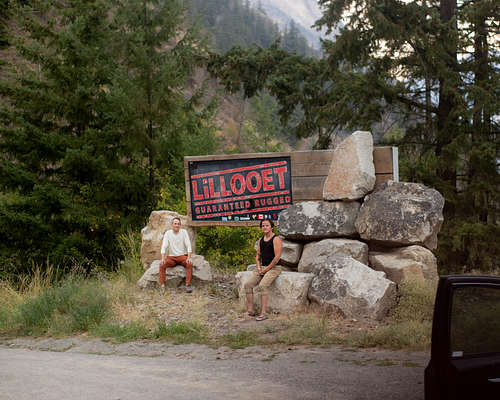
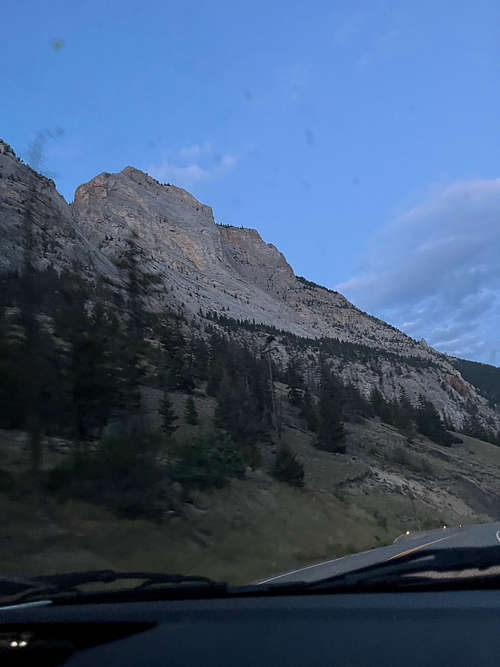
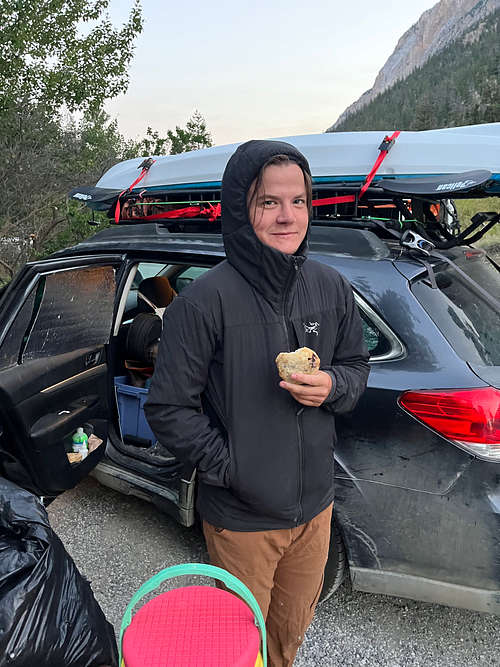
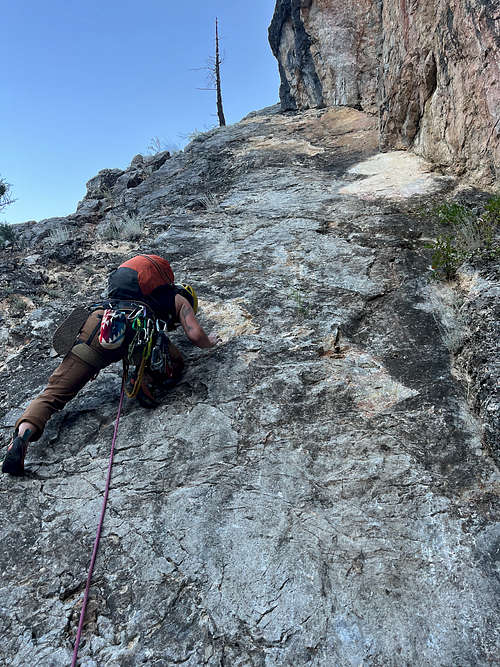
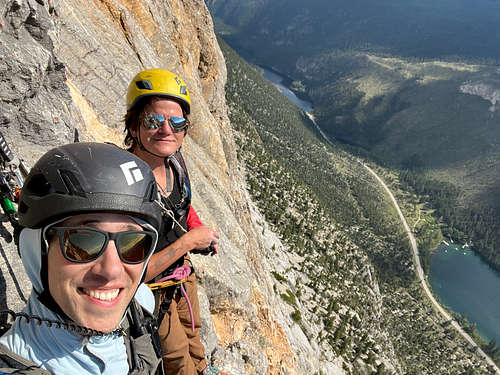
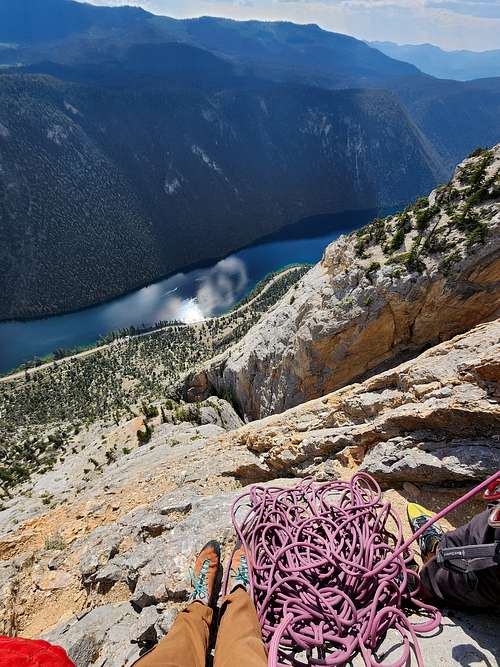
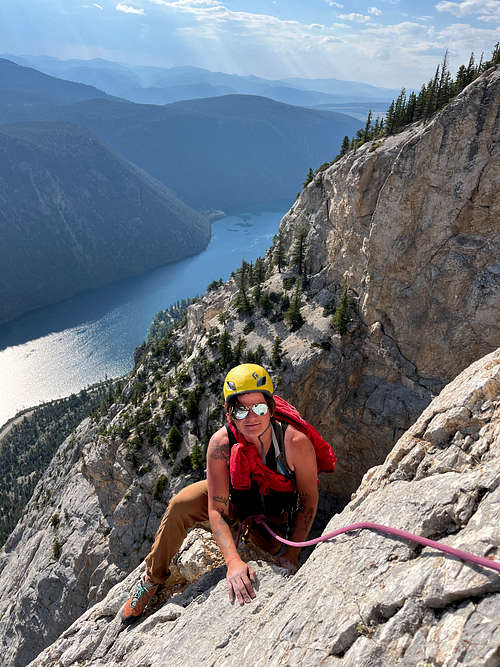
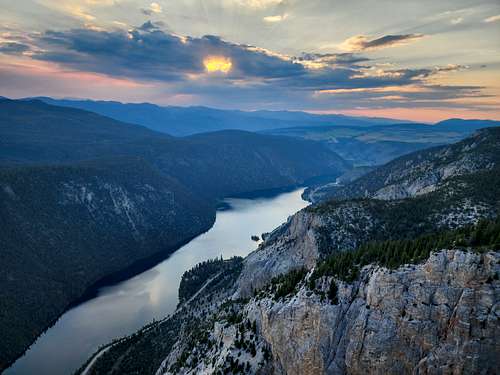




Comments
Post a Comment